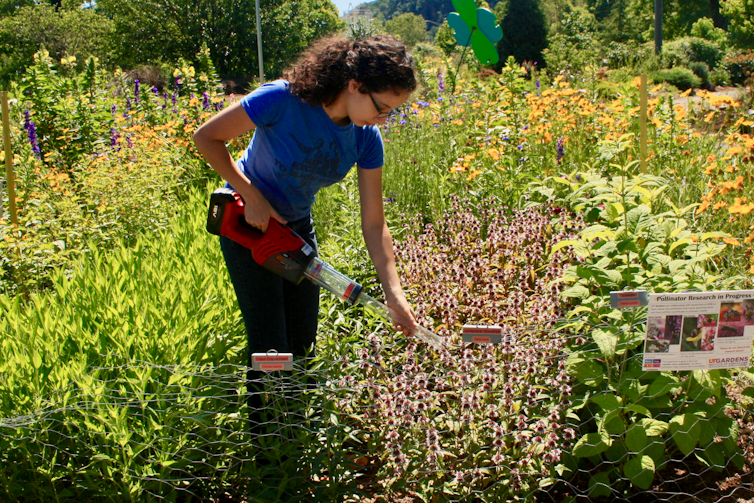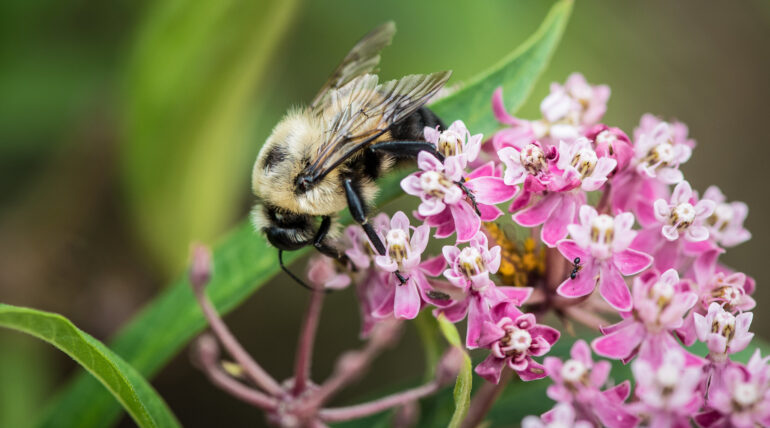In order to reproduce, most flowering plants rely on animals to move their pollen. In turn, pollinators rely on flowers for food, including both nectar and pollen. If you’re a gardener, you might want to support this partnership by planting flowers. But if you live in an area without a lot of green space, you might wonder whether it’s worth the effort.
I study bees and other pollinators. My new research shows that bees, in particular, don’t really care about the landscape surrounding flower gardens. They seem to zero in on the particular types of flowers they like, no matter what else is around.
To design a garden that supports the greatest number and diversity of pollinators, don’t worry about what your neighbors are doing or not doing. Just focus on planting different kinds of flowers – and lots of them.
Comparing different landscapes
To test whether bees are more plentiful in natural areas, my team and I planted identical gardens – roughly 10 feet by 6½ feet (3 x 2 meters) – in five different landscapes around eastern Tennessee that ranged from cattle pastures and organic farms to a botanical garden and an arboretum. All five gardens were planted in March of 2019 and contained 18 species of native perennials from the mint, sunflower and pea families.

Sampling bugs in one of the test gardens.
Laura Russo, CC BY-SA
Over the course of the flowering season, we surveyed pollinators by collecting the insects that landed on the flowers, so we could count and identify them. The sampling took place in a carefully standardized way. Each week we sampled every flowering plant in every garden, in every landscape, for five minutes each. We used a modified, hand-held vacuum we called the “Bug Vac” and repeated this sampling every week that flowers were in bloom for three years.
We wanted to test whether the area immediately surrounding the gardens – the floral neighborhood – made a difference in pollinator abundance, diversity and identity. So we also surveyed the area around the gardens, in a radius of about 160 feet (roughly 50 meters).
To our surprise, we found the surrounding terrain had very little influence on the abundance, diversity and composition of the pollinators coming to our test gardens. Instead, they were mostly determined by the number and type of flowers. Otherwise, pollinators were remarkably similar at all sites. A sunflower in a cattle pasture had, by and large, the same number and types of visitors as a sunflower in a botanical garden.
Menu planning for pollinators
We used native perennial plants in our study because there’s evidence they provide the best nutrition for flower-visiting insects. We chose from three plant families because each offers different nourishment.
Plants in the mint family (Lamiaceae), for example, provide a lot of sugary nectar and have easily accessible flowers that attract a wide variety of insects. I’d recommend including…



